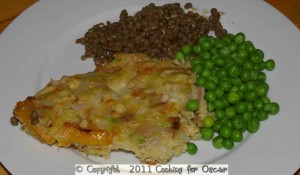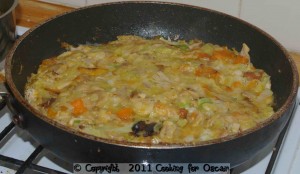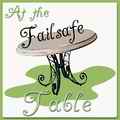My Mum used to make Bubble and Squeak, but I had forgotten all about it until I came across this recipe yesterday on Feed the People. Roast chicken with roast swede and potatoes is an almost weekly staple for us. We always cook a large chicken with heaps of extra vegetables so that we have leftovers for making pizza, risotto, pasta or chicken sandwiches. After coming across Jessica’s recipeI was inspired to try it, and it turned out really yummy. Quantities are only a guide based on the amount of leftovers I had, but along as there are plenty of potatoes the quantities won’t really matter.
Bubble and Squeak
| Serves | 4 |
| Prep time | 30 minutes |
| Cook time | 25 minutes |
| Total time | 55 minutes |
| Allergy / Intolerance | Amines, Artificial Addititives, Artificial Colours, Glutamates, Preservatives, Salicylates |
| Suitable for | RPAH Elimination Diet - Low Chemical / Failsafe, RPAH Elimination Diet - Moderate Chemical, Salicylate Challenge |
| Meal type | Lunch, Main Dish, Side Dish |
| Misc | Child Friendly, Pre-preparable, Serve Cold, Serve Hot |
| Region | British |
Bubble and squeak, a great use for left over roast chicken and vegetables. Can be made using low or moderate salicylate vegetables.
Ingredients
- 3 roast potatoes (roughly mashed)
- 1 cup other leftover roast vegies (such as swede or carrot and sweet potato (moderate salicylates), chopped)
- 1/8 cabbage (finely chopped)
- 1 1/2 cup leftover roast chicken (chopped)
- 2 Small leek (finely chopped)
- 2 tablespoons sunflower oil
- 2 eggs (lightly beaten)
- 1 clove garlic (crushed)
- 40g butter or Nuttelex (chopped)
- Salt
Directions
Note
Quantities are only a guide as Bubble and Squeak is traditionally made with leftovers.
Low Chemical / Moderate Salicylates




 Print recipe
Print recipe



Hi Evelyn,
yes meat can develop amines during cooking, which is why you need to try to avoid browning it. Amines can also develop if the meat is not fresh, that means you need to freeze it as soon as you buy it until you are ready to cook it. It also means left overs should be frozen, rather than being kept in the fridge, which is what we do. I’m not sure how many people are sensitive to both salicylates and amines, but I have come across a lot of them through this site, but in our case it’s not the case. We did the elimination diet then challenged amines, salicylates, glutamates and all the groups of artificial preservatives, additives and colours separately. Oscar was intolerant to salicylates and glutamates, but not amines. I have also come across people who are only amine intolerant, so there probably isn’t any true guide about it. The best way to find out would be to do the food challenges.
Oscar is able to consume overnight food with no reactions? I read that food that have been kept a little bit too long and overnight food tend to produce amines. And people who are salicylate sensitive, tend to be sensitive to amines too.